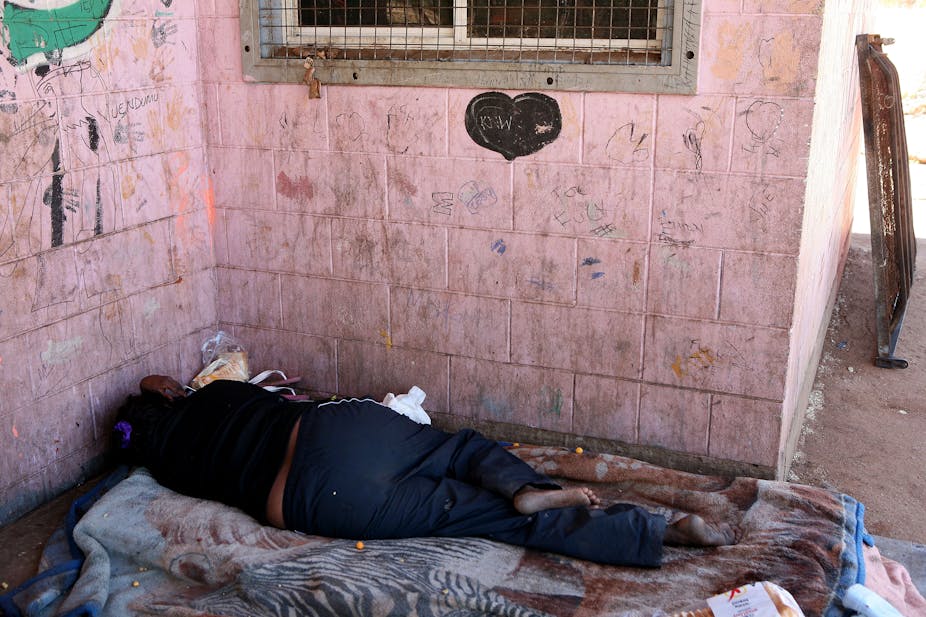How long should a criminal’s past history and background remain relevant in a court of law? That was the question before the High Court earlier this week in the case of William Bugmy.
Bugmy, a 29 year-old Aboriginal man who was originally convicted of assaulting a prison guard in 2011, had been in and out of prison from a young age. He had grown up in a deprived household, where alcohol abuse and violence were the norm.
The High Court ruling does not, as some had hoped, introduce special sentencing principles for Aboriginal offenders. However, it does go some way towards legal recognition of Indigenous disadvantage and reaffirming the principle of individualised justice.
The court’s decision
William Bugmy was originally convicted and sentenced to a total effective sentence of six years and three months for charges of assault and causing grievous bodily harm to a correctional officer. The NSW Court of Criminal Appeal (NSW CCA) increased his sentence by 13 months. But the NSW Court did this without determining that the sentence was “manifestly inadequate”, which the High Court said is wrong.
For this reason the High Court has now ordered the NSW court to rehear Bugmy’s case. While this could allow for re-sentencing on a Crown appeal, this is unlikely given the other guidance that the High Court has provided.
In reaching its decision,the High Court found that the NSW court should not have stated as a matter of principle that:
…the effects of social deprivation in youth must diminish over time, even where there has been substantial offending.
This is illogical, as “grave social difficulties” can explain why an adult offender has failed to mature or learn from errors.
Instead, the High Court stated that “background factors” including Aboriginality and social disadvantage must be given “full weight in the determination of the appropriate sentence in every case”.
The High Court also recognised that giving full weight to social deprivation can present considerable difficulties for sentencing judges. But this does not justify eliminating it from consideration. Sentencing is not a process of elimination, but rather a process of synthesis of all the relevant information, to be determined on a case by case basis.
Bugmy’s representatives had also argued for the High Court to adopt Canada’s indigenous sentencing principles, which required courts to take into account the unique circumstances of all Aboriginal offenders - especially the high and increasing rates of incarceration - when determining the accountability of an individual Aboriginal offender.
But the High Court declined. Without a legislative reform similar to that in Canada, it cannot depart from the common law sentencing principle of individualised justice, which means that each case must be determined on its own unique factors.
Bush or the city: disadvantage is still relevant
After the Royal Commission into Aboriginal Deaths in Custody, sentencing courts heard evidence of offender’s deprived childhood and, where appropriate, recognised the negative systemic effects of colonisation on offending. Fernando’s case provided an example of how to apply sentencing principles and take into account the social context of that Aboriginal offender. This came to be misleadingly referred to as “Fernando principles”.
About 12 years ago, advocates and scholars noted increasing intolerance as some courts refused to take into account an Indigenous offender’s troubled background because he or she was raised in an urban environment or was “part Aboriginal”.
Significantly, however, the High Court stated that any Aboriginal offender may argue that they have experienced social disadvantage arising from colonisation and dispossession, whether they live in an urban, regional or remote area - provided there is evidence to support this conclusion.
It is important to note that the Bugmy High Court decision has made it clear that there is no such thing as Indigenous sentencing principles.
Implications for future sentencing cases
Sentencing law is not a set of rules to be applied without discretion.
Advocates cannot rely upon a principle as a substitute for bringing evidence before the court. The challenge for advocates remains to ensure that sentencing courts do not deny indigenous offenders individualised justice and ensure that they are substantively equal before the law.
Advocates must assist courts to make sense of the evidence, by providing them with relevant social research, to ensure that courts properly consider Indigenous experience.
Judges cannot escape the dilemmas of weighing up complex and sometimes conflicting evidence. They must give full weight to all relevant factors, in order for the sentence to be proportionate and just.
Some Indigenous advocates may be disappointed by the decision of the High Court of Australia, particularly that the court did not endorse the Canadian indigenous sentencing principles. In hindsight, it was unrealistic to expect this, as it is not for a court to create new law.
But advocates for Indigenous and other disadvantaged offenders can take heart. The Bugmy decision breathes new life into the common law principles of individualised justice and substantive equality, insists upon the continuing relevance of social context to explain the cause of criminal offending and demonstrates the ongoing need for strong advocacy for Indigenous offenders.

